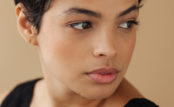Sunlight is great for the soul, but it’s murder on your skin. Sun damage is a leading cause of wrinkles and aging on the body. And that’s before the health risks involved. With skin cancer rates climbing across the globe, there’s never been a greater urgency to stay out of the sun.
Ok, so we can ‘t avoid it completely. But you’d do well to at least manage your time in your sun. Skin care for the sun is about management, of your minutes exposed, the clothes you wear and the sunscreen you use. Don’t even think about going out in the sun without a sunscreen less than SPF 15.
We all burn at some point, and while the odd burn won’t kill you, repeated burns raise long-term health risks, including :
- skin cancer
- lupus
- likelihood of cold sores
- premature aging and wrinkling
- vision problems
It’s especially important to practice skin care for the sun if you’re a pregnant woman, child under six or adult over 60, have red hair and fair skin, are sensitive to light or belong to a family with a history of skin cancer. Factors that can influence the severity of sunburns include:
Time of day – The sun tends to be hottest between 10AM and 4PM.
Season – You’re more likely to burn in summer, when the hemisphere is closer to the sun.
Reflective surfaces – Water, concrete, white sand, even ice and snow can reflect UV rays and cause burns.
UV index – A daily measure of the sun’s UV rays. The higher the rating, the greater chance of burning.
Proximity to the equator – There’s more sunlight in the atmosphere in countries along the equator.
Salon tanning doesn’t preclude you from risks either; tanning beds emit ultraviolet rays at similar levels as the sun, but with more radiation. Tanning beds are now linked to increased risk of melanoma, particularly in women, and the World Health Organization now warns against salon tanning for cosmetic purposes.
How to Avoid a Sunburn
Skin care for the sun minimizes the effects of UV rays. Avoid the sun during hot hours. Cover up, with light-colored, loose-fitting and long-sleeved clothes, to stay cool and reflect the sun’s light. Wear a wide-brimmed hat if possible. Slather on water-resistant sunscreen, of at least SPF 15, and higher in hot climates. Re-apply every two hours, after sweating or being in the water.
In addition, don’t forget to stay hydrated. Aim for 10 to 12 glasses of water when it’s hot. And wear close-toed shoes instead of sandals, or wear socks with sandals. The fashion police might arrest you, but your feet won’t burn.
How to Treat a Sunburn
In the event that you burn, consider the severity. If the skin is red and mild to the touch, it’s likely a first-degree burn and can be treated at home.
Take a cool, but not cold, bath or shower, or apply a clean, cool cloth to the affected area, several times throughout the day. Apply aloe vera gel or lavender oil to the burn, as they can both relieve pain and help healing. Don’t break any blisters that form, and if you need a pain-killer, use ibuprofen or acetaminophen.
Olive oil, coconut milk and tomato juice are other topical home remedies that might relieve pain and help the skin heal.
Symptoms of a second-degree burn might take several days to develop, including red and painful skin, blisters and swelling. This is a more serious burn that might indicate damage to deeper skin layers and are generally more painful and take longer to heal. Use the same techniques to manage this kind of burn, and see a doctor if problems persist.
Conclusion
Tanned skin may be sexy, but it’s not without risks. Skin care for the sun requires awareness, diligence and in many cases, avoidance of the sun completely. But not to worry. You won’t tan, but you’ll be less susceptible to skin cancer and sun damage down the road, and you’ll avoid excessive wrinkles in the process.




